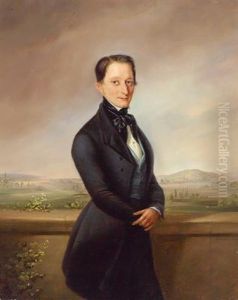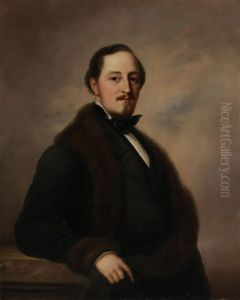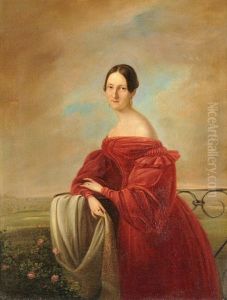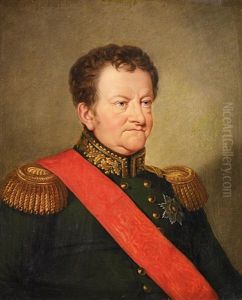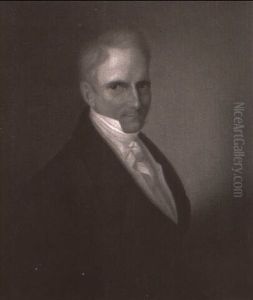Ehregott Grunler Paintings
Ehregott Grunler was a German landscape painter renowned for his romantic and detailed portrayal of nature. Born on February 26, 1803, in Freiberg, Saxony, Grunler developed an early interest in art, inspired by the scenic beauty of his homeland. He pursued his passion for painting at the Dresden Academy of Fine Arts, where he studied under the guidance of eminent artists of the time. Grunler's education not only honed his technical skills but also instilled in him a deep appreciation for the romantic movement, which greatly influenced his artistic direction.
After completing his studies, Grunler embarked on a series of travels across Europe, drawing inspiration from the diverse landscapes he encountered. His journeys took him to the Alps, Italy, and the picturesque regions of Germany, where he meticulously captured the essence of each locale in his paintings. Grunler's work is characterized by its attention to detail, vibrant colors, and the emotional depth with which he depicted natural scenes. He often portrayed the interplay between light and shadow, aiming to evoke a sense of wonder and tranquility in the viewer.
In the mid-19th century, Grunler returned to Dresden, where he became an influential figure in the city's artistic community. He taught at the Dresden Academy of Fine Arts, sharing his knowledge and passion for landscape painting with the next generation of artists. Throughout his career, Grunler exhibited his work in various galleries across Germany, gaining recognition and acclaim for his contributions to the romantic landscape genre.
Ehregott Grunler's legacy is preserved in the collections of several German museums, where his paintings continue to be admired for their beauty and emotional resonance. He passed away on June 22, 1877, in Dresden, but his work remains a testament to the romantic spirit of the 19th century, capturing the sublime nature of the world with a painter's eye and a poet's soul.
